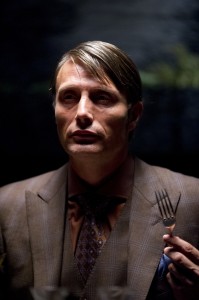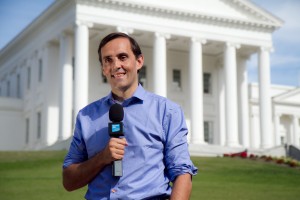
After more than 40 years of operation, DTVE is closing its doors and our website will no longer be updated daily. Thank you for all of your support.
Channelling eastern promises
Despite the continued fallout from the global financial crisis, there are strong signs of pay TV growth in central and eastern Europe. Andy McDonald reports.
In recent years, many of central and eastern Europe’s free-to-air channels have struggled as advertising budgets have tightened. By comparison, pay TV channel providers have continued to prosper, albeit while facing downward pressure on carriage fees in certain price-competitive markets. But what are the prospects for pay TV broadcasters in this region compared to other territories in the world and how are ad-supported players coping?
A+E Networks UK this month opened an office in Warsaw, Poland. Though the firm is, by its own admission “a bit of a late starter” in the region, managing director Tom Davidson sees strong growth potential.
“We’re very bullish in central Europe. So Poland and Romania are our two hotspots with Hungary close behind,” he says, explaining that the Polish office launch is part of plan to “get closer to our customers in the markets that have the consumer potential and a large operator base. We want to be sensitive to the culture, we want to be sensitive to the viewing habits, we want to be sensitive to the negotiation styles and we feel that the way to do that is really to have local talent on the ground.”
A+E Networks UK – the joint pay TV venture between A+E Networks and BSkyB – first ran with History as its flagship brand in CEE, with Crime and Investigation following close behind. The firm now has separate feeds for History in Romania and Crime and Investigation in Poland, with a separate Polish History feed to follow in the autumn. Davidson says that A+E Networks UK is also investigating Hungary as a potential market for a separate History feed to replace the pan-European version of the channel that airs there.
“For many of the central European markets, those have been the two brands [History, Crime and Investigation] that we’ve been focusing on. We think that there is still quite a bit of room for expansion as well,” says Davidson. With a wider bouquet of channels to offer, A+E Networks UK still has the potential to introduce other brands into CEE, such as Bio and Lifetime – the latter of which recently went live in the UK. However it also has more space to expand its existing CEE channels into new markets. Russia, for example, has “been on our radar for a while,” says Davidson, adding that A+E is “in heavy discussions there”.
Russian growth strategy
Indeed, Russia has been a market that Viacom International Media Networks (VIMN) has recently opted to focus on, with a planned HD re-launch of MTV Russia due to happen in October. While MTV first launched there in 1998, this will be the first time in 15 years that the channel will be both owned and operated by VIMN, with local media group ProfMedia previously taking charge of the channel as part of a partnership deal.
Elena Balmont, general manager of VIMN, Russia and CIS, says her vision is to turn MTV into “the multiplatform destination of choice for young Russians,” combining local content with the best of MTV’s global programming – much of which was not aired previously – dubbed into Russian.
“Russia is a critical global market for VIMN and we’re increasing investment in our business here,” says Balmont. “Taking full control of the MTV brand means that we’ll be in a position to strengthen our presence in Russia even further. I’m confident that we’ve got a lot more room for growth.”
This latest stage of VIMN’s Russian growth strategy follows the establishment of a Moscow office for the first time last year, “staffed entirely by locals,” says Balmont, while Nick Jr. and Paramount Comedy went live as Russian-language channels in the last two years. Yet the market looks like it will offer still further scope for expansion.
According to a report by management consultancy J’son & Partners, by 2017 Russia’s pay-TV market will grow to 40 million households. “Although the figure is quite impressive I must point out that the market is far from nearing saturation point,” says Balmont. “The growth that we’re seeing and will continue to see is very much led by the size of the country – we have a population of more than 140 million which is rising steadily.”
NBC Universal and Corus Entertainment co-owned children’s channel KidsCo launched in 2007 and has, as managing director Hendrik McDermott explains, grown “very quickly over the last four or five years”. Currently live in markets including Russia, Romania, Greece and Hungary, its recent focus has been to launch a branded block of programming in partnership with NBCU-owned science fiction channel SyFy, which it is introducing across its entire CEE footprint.
Though KidsCo plans to take the SyFy Kids block to Asia and beyond, McDermott said KidsCo decided to launch in CEE first. “We took a look at where our important clients were, where our key growth territories were, where we could get the rights cleared first, and then how quickly we can do dubbing. That lead us to start in eastern Europe, but really it’s a staged approach across hopefully the world”.
Despite the long-lasting effects of the global economic crisis over recent years, McDermott says he still considers the pay TV business globally to be strong. While he says there has been some “obvious challenges” in territories like Greece, he adds that Russia and Turkey “have been pretty robust markets” and there is also “plenty of opportunity to go in the likes of Romania and Hungary as well”.
“We grew very quickly over the last four or five years, but what we’re trying to do now is re-invest in ourselves and really up the game of our content proposition, our languaging proposition and then continue our growth. So at the moment we’re looking for deeper penetration into our existing footprint. Then we’re looking longer term at entering into new markets,” he says. “There are territories certainly that interest me in the longer term future – Latin America is obviously a growing market, we have some further territories that we’re looking at in south east Asia, and then really deeper penetration in eastern Europe.”
More opportunities
Bruce Tuchman, president of AMC/Sundance Channel Global Networks, the international division of AMC Networks, says that though its global channels business only launched a few years back, it too has made “a lot of progress.” Its Sundance Channel is live in countries including Poland, Romania and Hungary.
While the Sundance Channel is due to launch for the first time in seven Latin American countries in September, Tuchman says that CEE bears some similarities to this market in that, for the most part, pay TV penetration can continue to grow.
“When I look at central and eastern Europe, I see in total a very large region that offers still more upside and 0verall subscriber penetration, unlike the more mature markets, let’s say in parts of western Europe and certainly the United States,” says Tuchman. “I think as we wean our ways out of this economic situation, a lot of pent-up demand will be on uncorked, if you will, and we’ll hopefully be the beneficiaries of that.”
In the short-term Sundance, like A+E Networks UK, aims to up its focus on Poland with plans to launch a dedicated regional feed focused on this region, with its own transponder, in a bid to “dial into the Polish audience”. Though AMC/Sundance is still laying the groundwork for this, Tuchman says this is the firm’s general strategy “when we think a market has reached some critical mass in terms of subscribers or potential opportunity, or just a certain niche that we really want to target”.
A growing market share and strong brand are key to growth in the CEE region as a whole, says John Rossiter, general manager, Sony Pictures Television Networks Central Europe. “Economic conditions in our markets are less than ideal cyclically at the moment. What we see in the next few years is a survival of the fittest scenario playing out,” he says. In spite, of this, Rossiter too is “bullish on growth prospects in the central Europe region.” The reason for this, he claims, is that “the infrastructure exists, combined with the opportunity, to grow and catch-up with western Europe.”
As such, SPT Networks is investing to ensure that pay TV brands like AXN prosper. “We expanded our operation last year by launching local offices in Poland, Romania, Croatia and Bulgaria, hiring experienced local staff for each. All report into our regional HQ for central Europe in Budapest,” says Rossiter. SPT is also collaborating with operators to launch AXN Now, its new on-demand service, and on the content side SPT has co-commissioned shows like Hannibal so that they can premiere on SPT’s channels globally.
Betting on blockbuster western content is a familiar ploy for attracting viewers, and is a strategy that is being deployed by the likes of Sundance in CEE – with shows like Mad Men and Rectify. However, other western players are looking to up their focus on localisation.
A+E Networks’ Davidson claims there’s “something about History shows currently that just travels without cultural implications,” citing series like Pawn Stars and Storage Wars that air globally. However the firm also recently aired its first local production for Crime and Investigation in Poland and has greenlit a couple of projects for History in Poland now as well, he claims. “We think that it is important to bring that combination of shows that work everywhere – the global hits – together with a local flavour, and not just in short form, but long-form and across all aspects of it. That will become more and more a part of what you see from us in the local territories,” says Davidson.
Elsewhere, Discovery Networks is going even further down this road. The firm has a strong portfolio across the CEE region with three flagship channels Discovery Channel, TLC and ID, along with networks like Animal Planet, Discovery Science and Discovery World. However, in Poland it also broadcasts Discovery Historia, “which is unique to the Polish market and includes a significant amount of local content,” says Discovery Networks’ central Europe country manager Olgierd Dobrzynski.
“Central Europe is a mature market with high penetration of pay TV channels, but despite the growth in this region in the recent years, we still see a lot of room for development in CEE,” says Dobrzynski. Part of these development plans include the launch of its new Discovery On-Demand offer. Another is to launch a free-to-air network to take advantage of available spectrum post-digital switchover.
“Discovery’s core business is pay-TV, however, in markets where it makes sense we are also launching free to air channels. We are currently applying for a DTT licence in Poland with DMAX which would be targeted at a wide range of viewers and will offer free educative and entertaining programming,” says Dobrzynski. “The channel will use Discovery’s library of content but its offer will not overlap with our pay TV programme strategy and one-third of DMAX shows will be produced in Poland.”
Ad market issues
The strategy indicates an underlying faith in the TV ad market, despite pressure on ad budgets in some parts of Europe as a reaction to the economic downturn. “We believe the TV market is healthy,” says Dobrzynski, claiming that Discovery’s ad-sales portfolio in Poland recorded a double-digit increase in 2012. However, he does admit “TV consumption has changed in favour of thematic channels with terrestrial players losing market share”.
Levente Málnay, CEO of Chello Central Europe agrees. “We have recently completed extensive international research, conducted by Gfk in six central European countries, that clearly shows there is a consumer demand for high quality, thematic channels – especially in the infotainment and kids genres,” he says. “We are further strengthening our genre strategy by investing in building strong international brands and in producing relevant local content in our existing markets. We are also exploring with high level of optimism the possibilities of entering new territories.” Chello Central Europe’s existing portfolio of channels in this region includes sports channels Sport1, Sport2 and SportM, kid’s channels Minimax and Megamax, cooking channel TV Paprika and documentary channel Spektrum HD.
As a free-to-air channel provider, news network France 24 is keeping a close eye on ad market shifts – be they cyclical or structural changes – according to vice-president of distribution Eric Cremer. However, he says as a “young channel on the market, our main concerns in the short term remain how to extend the channel distribution across the region and increase its awareness with the public.”
Like many channels, France 24 has benefitted from digital switchover in Europe, which has allowed it to broaden its footprint on digital platforms. “France 24 is currently available in most of the CEE countries with diverse penetration rates of digital households ranking from almost 100% in Poland, to below 20% in Hungary, with an average penetration rate of 50-70% in Russia, Ukraine, the Czech Republic and the Baltic States,” says Cremer.
He claims that since France 24 launched at the end of 2006, CEE has shifted from a “very fragmented” space with lots of small analogue cable operators to a more integrated market with fast digitisation of TV networks – both satellite, cable and IPTV. “Although the maturity of CEE market differs widely from one country to another – with important disparities – we could generally speaking compare the CEE market to the western European market 10 to 15 years ago,” he says.
Though Cremer says that France 24’s penetration among all TV households in CEE – both digital and analogue – is substantially lower because of the still high rate of analogue-only TV households in the region, he claims “the digital switchover will definitively help France 24 to increase its penetration rate in the coming years.” Yet this could be to the detriment of others players in the market.
VIMN’s Balmont says that while digital switchover is the most anticipated change in the industry, in Russia “the biggest pressure is on regional TV channels, who believe they will be forced to switch to pay TV as there was no room for them in either multiplex 1 or 2” with the criteria for Russia’s multiplex 3 not clear.
In spite of this, Balmont claims that ad-supported cable and satellite channels are doing “rather well” in Russia. “According to the recently released Global Entertainment and Media Outlook for 2013-2017 by PwC, revenues generated by advertising in Russia will double to reach almost US$500m (€375 million), although it’s fair to say that bigger ad budgets are more difficult to win in the current climate due to segmented audiences,” she says.
KidsCo operates as an entirely ad-free entity, with a focus on its content strategy. However, McDermott claims that the pay operator may use advertising as a future growth strategy “to allow us to diversify our revenue stream.” At Sundance/AMC Tuchman says that he expects cable and satellite will continue to pick up a large amount of ad sales amid shifts from traditional forms of advertising like print. Yet Davidson at A+E Networks UK believes that the main beneficiaries will be pay, not free-to-air TV operators. “In the central European region and some of the other emerging markets, there is still, I think, quite a gap between what advertisers get on the terrestrial versus what they get on the pay TV side of things. So if they need to move around money, in theory they should be moving it more towards pay than to terrestrial, because they get more bang for their buck there.”
Though Europe is not out of the economic gloom yet, analogue switchover, which is pacing behind western Europe in CEE, is providing more opportunities for the launch of themed, digital channels. While this may stretch already depleted ad budgets further, and thinner, for pay TV operators there are still plenty of opportunities to be had, and, as many are realising, this can especially be realised through greater expansion and localisation.





